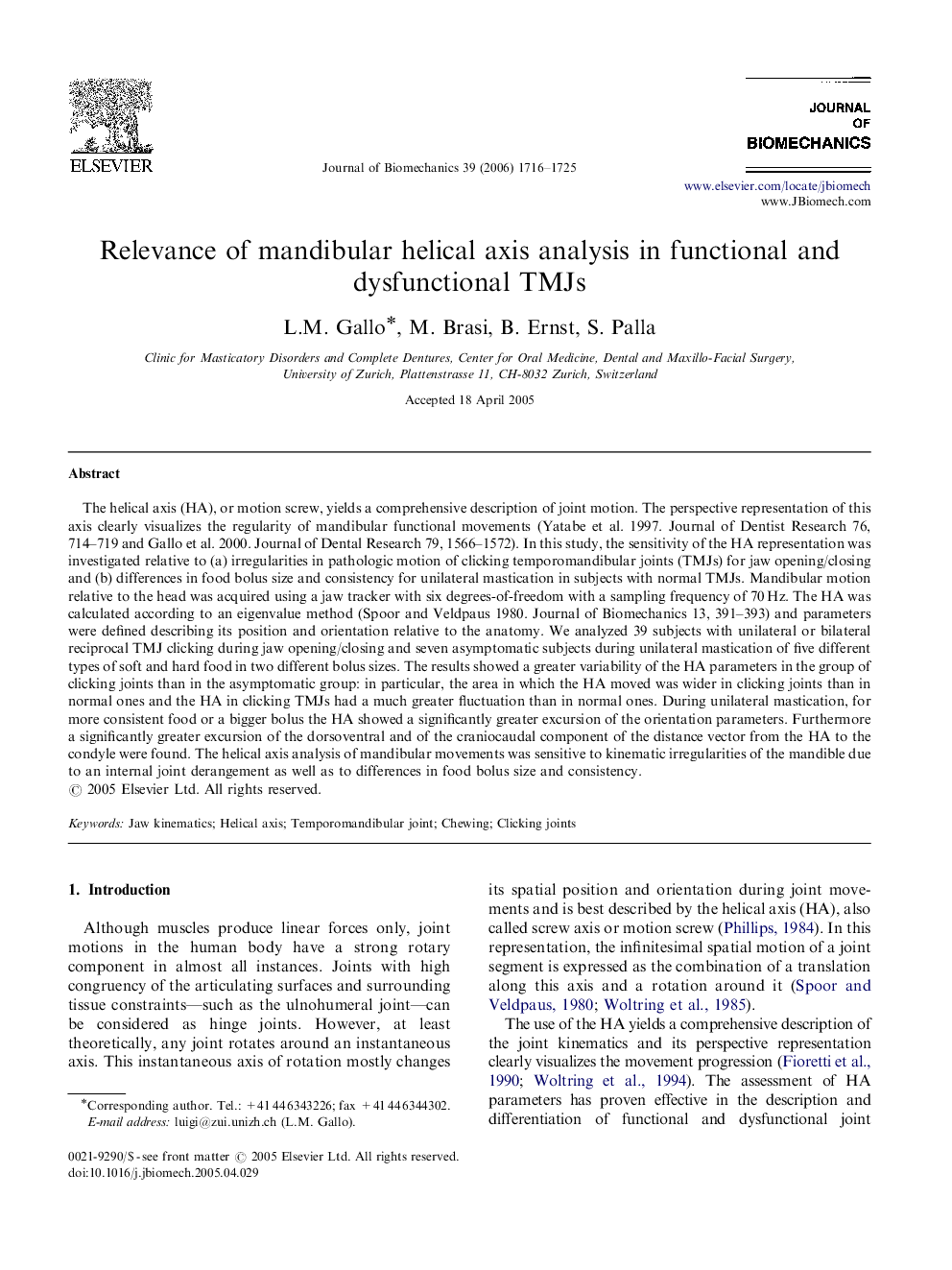| کد مقاله | کد نشریه | سال انتشار | مقاله انگلیسی | نسخه تمام متن |
|---|---|---|---|---|
| 874936 | 910355 | 2006 | 10 صفحه PDF | دانلود رایگان |

The helical axis (HA), or motion screw, yields a comprehensive description of joint motion. The perspective representation of this axis clearly visualizes the regularity of mandibular functional movements (Yatabe et al. 1997. Journal of Dentist Research 76, 714–719 and Gallo et al. 2000. Journal of Dental Research 79, 1566–1572). In this study, the sensitivity of the HA representation was investigated relative to (a) irregularities in pathologic motion of clicking temporomandibular joints (TMJs) for jaw opening/closing and (b) differences in food bolus size and consistency for unilateral mastication in subjects with normal TMJs. Mandibular motion relative to the head was acquired using a jaw tracker with six degrees-of-freedom with a sampling frequency of 70 Hz. The HA was calculated according to an eigenvalue method (Spoor and Veldpaus 1980. Journal of Biomechanics 13, 391–393) and parameters were defined describing its position and orientation relative to the anatomy. We analyzed 39 subjects with unilateral or bilateral reciprocal TMJ clicking during jaw opening/closing and seven asymptomatic subjects during unilateral mastication of five different types of soft and hard food in two different bolus sizes. The results showed a greater variability of the HA parameters in the group of clicking joints than in the asymptomatic group: in particular, the area in which the HA moved was wider in clicking joints than in normal ones and the HA in clicking TMJs had a much greater fluctuation than in normal ones. During unilateral mastication, for more consistent food or a bigger bolus the HA showed a significantly greater excursion of the orientation parameters. Furthermore a significantly greater excursion of the dorsoventral and of the craniocaudal component of the distance vector from the HA to the condyle were found. The helical axis analysis of mandibular movements was sensitive to kinematic irregularities of the mandible due to an internal joint derangement as well as to differences in food bolus size and consistency.
Journal: Journal of Biomechanics - Volume 39, Issue 9, 2006, Pages 1716–1725